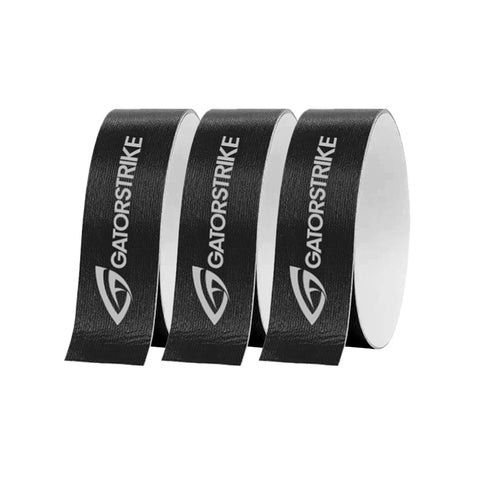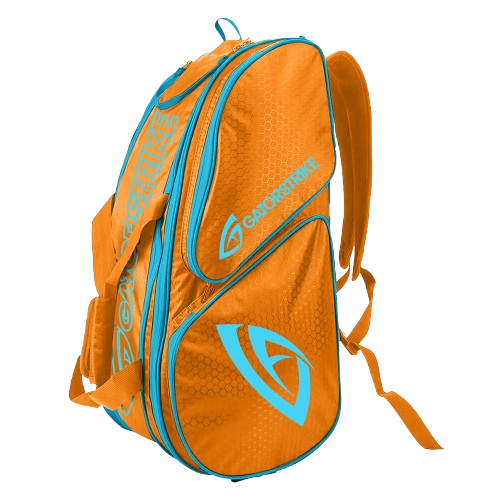
Common Pickleball Mistakes and How to Avoid Them
Share
Introduction
Pickleball is a dynamic and engaging sport that combines elements of tennis, badminton, and table tennis. Despite its straightforward rules, players often encounter pitfalls that can undermine their performance. Understanding and avoiding these common mistakes can significantly enhance your game. This article delves into frequent errors made by pickleball players and offers practical strategies to overcome them, ensuring you can play with confidence and skill.
Poor Serve Execution
Inaccurate Placement
One of the most critical mistakes in pickleball is an inaccurate serve. A serve that lacks precision can provide your opponent with an easy return, diminishing your advantage. To improve serve placement, focus on targeting specific areas of the service box, such as the sidelines or deep corners. Use practice drills to develop consistency and accuracy in your serves, experimenting with different spins and speeds. A well-placed serve not only initiates the point on your terms but also sets the tone for the rest of the rally.
Inconsistent Toss
An inconsistent toss can lead to a poorly executed serve, affecting both power and accuracy. To avoid this mistake, develop a consistent tossing routine that ensures the ball is thrown in the same trajectory each time. Practice your toss separately from your serve to build muscle memory and coordination. A reliable toss helps you make cleaner contact with the ball and execute a more controlled and effective serve, reducing the likelihood of errors.
Ineffective Return of Serve
Lack of Depth
Returning serves with insufficient depth can place you at a disadvantage, as it allows your opponent to attack with ease. Aim to return serves deep into your opponent’s court, ideally towards the baseline. Deep returns force your opponent to move back and can limit their options for aggressive plays. Practice returning serves with varied depths to keep your opponent guessing and prevent them from gaining the upper hand in the rally.
Incorrect Footwork
Footwork is essential for a successful return of serve. Incorrect or sluggish footwork can result in mis-hits and poor positioning. To improve, focus on maintaining a low, balanced stance and quick, lateral movements. Practice moving efficiently to get into position for each return, using drills that simulate different serve placements and speeds. Good footwork allows you to execute precise returns and prepare effectively for the ensuing rally.
Subpar Net Play
Overcommitting at the Net
Overcommitting at the net can leave you vulnerable to your opponent’s shots and disrupt your positioning. It’s crucial to time your net approach carefully and avoid rushing forward prematurely. Instead, position yourself strategically based on your opponent’s shot and maintain a balanced stance. Use drills to practice approaching the net at the right moments and developing a keen sense of when to commit or retreat. Effective net play requires a blend of aggression and caution to maintain control and capitalize on opportunities.
Poor Volley Technique
Poor volley technique can lead to missed opportunities and unforced errors at the net. Focus on proper volley form, including a firm grip, a stable paddle position, and controlled follow-through. Practice volleying against different types of shots to improve your reaction time and accuracy. By refining your volley technique, you can execute more precise and effective net plays, increasing your chances of winning points during critical moments.
Defensive Errors
Misjudging Lobs
Misjudging lobs can result in missed returns or weak defensive plays. To avoid this mistake, practice tracking the trajectory of lobs and positioning yourself accordingly. Use drills to improve your timing and anticipation for lob shots, such as practicing with a partner who lobs consistently. Proper positioning and anticipation allow you to respond effectively to lobs and maintain control of the rally.
Ineffective Blocking
Blocking is a crucial defensive technique for handling powerful shots. Ineffective blocking can lead to errors and lost points. To improve, focus on positioning your paddle correctly and using a soft touch to absorb the opponent’s power. Practice blocking against different types of shots to build confidence and technique. Effective blocking helps you stay in the rally and turn defensive situations into opportunities for counter-attacks.
Inadequate Court Positioning
Being Too Close or Too Far from the Net
Positioning yourself too close or too far from the net can hinder your ability to respond effectively to your opponent’s shots. To avoid this mistake, practice maintaining optimal positioning based on the situation. Position yourself closer to the net when you’re looking to attack or poach, and move further back when preparing for defensive shots or returns. Consistent practice and situational drills help you develop a keen sense of court positioning and improve your overall gameplay.
Poor Coverage of the Court
Inadequate court coverage can leave gaps and make it easier for your opponent to exploit weaknesses. To improve court coverage, practice moving efficiently and positioning yourself to cover all areas of the court. Incorporate footwork and agility drills into your training to enhance your ability to move quickly and effectively. By improving your court coverage, you can reduce your opponent’s opportunities and maintain control during rallies.
Overlooking Shot Selection
Using the Wrong Shot for the Situation
Using inappropriate shots for specific situations can lead to unforced errors and missed opportunities. To avoid this mistake, develop a better understanding of shot selection based on the game context. For example, use drop shots to force your opponent forward or employ lobs to counter aggressive net play. Practice recognizing different scenarios and choosing the most effective shot accordingly. Improved shot selection enhances your ability to control the rally and capitalize on your opponent’s weaknesses.
Inability to Adapt to Opponent’s Style
Failing to adapt to your opponent’s playing style can limit your effectiveness and increase the likelihood of mistakes. Observe your opponent’s tendencies and adjust your strategy to counter their strengths and exploit their weaknesses. For instance, if your opponent favors powerful shots, focus on defensive techniques and placement. Flexibility in your approach allows you to respond effectively to different playing styles and maintain a strategic advantage.
Neglecting Communication in Doubles
Lack of Clear Signals
In doubles play, clear communication is essential for effective teamwork. Lack of clear signals can lead to confusion and missed opportunities. Establish and practice a set of signals with your partner to coordinate your strategies and movements. Use simple, intuitive signals to indicate intentions, such as poaching or switching sides. Clear communication ensures that both players are aligned and can execute strategies effectively.
Poor Synchronization with Partner
Poor synchronization with your partner can disrupt your game and lead to uncoordinated plays. To improve synchronization, practice drills that emphasize teamwork and coordination, such as rotating positions or executing combined shots. Develop a mutual understanding of each other’s play styles and tendencies to enhance your overall performance. Effective synchronization in doubles play leads to smoother execution of strategies and a more cohesive team dynamic.
Failing to Manage Mental Game
Losing Focus During Critical Moments
Mental focus is crucial for maintaining performance during high-pressure situations. Losing focus can result in mistakes and missed opportunities. To improve focus, practice mindfulness techniques, such as deep breathing or visualization, to stay centered and composed. Develop routines to help maintain concentration during critical moments, such as visualizing successful shots or setting mental goals for each point. Effective mental management enhances your ability to perform consistently and make strategic decisions under pressure.
Allowing Frustration to Impact Performance
Allowing frustration to impact your performance can lead to decreased effectiveness and increased errors. To manage frustration, develop coping strategies, such as taking deep breaths, refocusing on your game plan, or setting short-term goals. Recognize that frustration is a natural part of competition, but it should not dictate your performance. Maintaining a positive mindset and focusing on your strengths helps you overcome challenges and perform at your best.
Conclusion
Avoiding common pickleball mistakes requires a combination of technical skill, strategic understanding, and mental fortitude. By addressing issues such as poor serve execution, ineffective return of serve, and subpar net play, players can enhance their performance and gain a competitive edge. Effective court positioning, shot selection, and communication in doubles further contribute to success on the court. Additionally, managing mental challenges and maintaining physical conditioning are essential for consistent performance. By understanding and addressing these common pitfalls, you can elevate your pickleball game and achieve greater success in every match.












